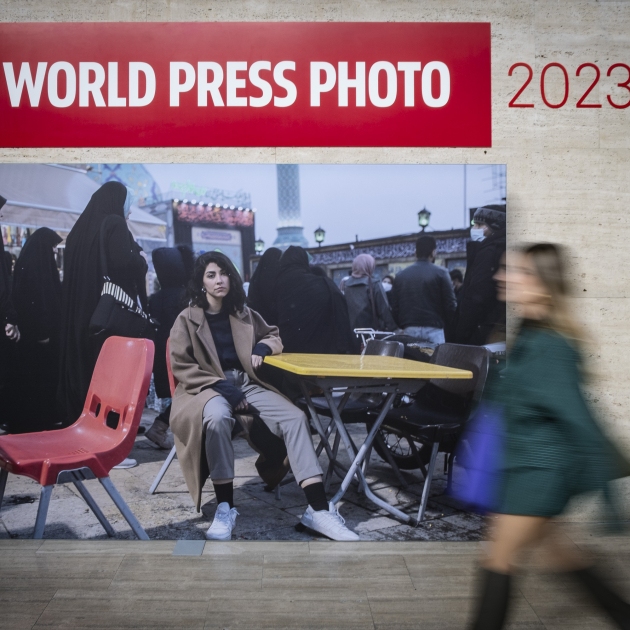The face of death is most terrible when contrasted with the light of a new life. A new life that, however, is born dead. This is precisely the juxtaposition of the World Press Photo 2023 photo of the year: Airstrike on the Mariupol maternity hospital, by Evgeniu Maloletka, showing a pregnant Iryna Kalinina who died in the hospital shortly after give birth to her stillborn baby. In the same direction is the work of photojournalist Emilio Morenatti (Zaragoza, 1969), honourable mention for a series of images of civilians with amputations. "I came up with a kind of metaphor about the geographical amputation of the country, which is mutilated by another that powerfully occupies it, and the amputation of the people who personally suffer the consequences of terrible wounds from artillery or explosions caused by occupying forces, in this case the Russians," the reporter explains. Morenatti himself lost a leg years ago and "as someone who is war-wounded and an amputee, I can relate more to this uncertainty."
The drama of Ukraine and the war that is ravaging the country is one of the topics covered by the iconic travelling exhibition of global photojournalism, alongside the women's protests in Iran, the ravages of the climate crisis, the Afghanistan of the Taliban and the personal stories hidden behind migration processes. One of the prize-winning images is that of César Dezfuli (Madrid, 1991), the only Spaniard to have won a global award in the Open Format category. With Passengers he tried to find the people he photographed in 2016 when they landed after risking their lives for a better life. It was the year in which all migratory records were broken in the Mediterranean, with almost 200,000 people crossing the route. The result is a series of photographs, before and after, for 75 people, putting faces on the disaster, but not only that: it also broadens the view much more without staying in cold numbers. "I wanted to bring something new to this narrative that had been constructed, I had the feeling that the idea of an anonymous mass phenomenon was just arriving," he clarifies. "To explain what is happening in the Mediterranean and to stay only there is to stay very far from reality."
César Dezfuli: "Explaining what happens in the Mediterranean and staying only there is staying very far from reality"
Among other stories photographed and awarded this year are organ trafficking in Afghanistan (Mads Nissen, Graphic Report of the Year), sea level rise in areas such as Egypt (Mohamed Mahdy, World Press Photo in Open Format), dementia on the African continent (Lee-Ann Olwage, World Press Photo for Individual Photography) or the community of elderly LGTBIQ+, Golden Gays, in the Philippines (Hannah Reyes), which caused Budapest (Hungary) to censor this edition of World Press Photo. The reason? An internal law that requires minors not to have access to LGTBIQ+ content that is considered propaganda. It is not the only time that this traveling exhibition has been censored in some country in the world (Vietnam, China...), although it is indeed the first time such an action has taken place in the heart of Europe, encouraged by the right-wing radicalization of governments.
The exhibition, which celebrates its 19th year in the Catalan capital and will be at the Centre for Contemporary Culture in Barcelona (CCCB) from November 10th to December 17th, includes a total of 119 photographs from 24 regional and 4 global winners, chosen from among more than 60,000 images and with the participation of 3,752 photographers from 127 different countries. Its mission is to stimulate debate in our society about the problems that plague the world and to spread the work of photojournalists in turbulent and precarious times, with professional paradigms that have been changing over the years and that demand new formats to be able to make the stories reach the people.
